So, what are environmental portraits? These images fall somewhere between a staged studio portrait and a candid portrait. And the place you take the picture plays a big role in telling the viewer more about your subject. Let’s first start with some definitions. Then I’ll offer some tips on how you can capture stunning environmental portraits.
What is an Environmental Portrait?
Portraits are photos that you stage to show the personality and the character of the subject. To do this, the person’s or face is usually the most dominant feature. So, you generally focus more on the facial traits of the subject you’re photographing. Yet, it’s not always necessary.
What is a Candid Portrait?
Candid portraits are photos without the subjects posing. These capture people as they are, without creating scenes and setting up the composition. When people don’t know that you’re photographing them, we talk about “secret photography”. It is a type of candid photography. But candid shots are not necessarily taken without the subjects noticing the photographer.
What is an Environmental Portrait?
Environmental portraits are snapshots of people in their environments. In these portraits, people are connected to and reflected in the location you photograph them in. Environmental portraits can be candid or staged shots. There is no rule for how spontaneous they should be. And it’s a kind of photography that’s quite popular among travel photographers. Good environmental portraits will tell strong stories of their subjects. Their immediate surroundings will give the viewer insight into where these people are, what they do, and who they are. Locations that help to tell a person’s story could be places where they relax, work, or play:
Their home Their workplace A favourite place to drink or eat A meaningful spiritual or religious place Where they walk, exercise, or play sports
Environmental portraiture is intertwined with documentary photography and photojournalism. And when an environmental portrait is a candid portrait, it can sometimes be seen as street photography.
My 10 Tips on Taking Engaging Environmental Portraits
Here are my top tips for how to create engaging environmental portraits of people in their natural settings. My examples are from my times of travel. But you can take pictures of friends, family, co-workers, neighbors, and strangers wherever you live.
1. Tell a Story with a Relevant Background for a Compelling Portrait
Knowing who you’re photographing is key to a fantastic environmental portrait. If you know something about the person’s story, that will help you create more compelling and meaningful images. There may be questions that you can answer with your environmental portrait.
Who is this person? What do they do? Where do they live?
And when you’re setting up your environmental portrait, look at the background. Check for elements that will support your subject’s story. Finding a relevant background can be challenging. But do your best to include something that illustrates a vital aspect of the subject. Compose your image with at least one significant object, detail, or view in the background of your image. For example, I included a detailed carved wooden panel in this environmental portrait of a Thai Buddhist nun.
2. Know the Importance of the Location for a Meaningful Environmental Portrait
Find out what’s significant about the location too. It pays to ask because you might not notice something that could be vital. In this photo, I only understood the significance of the stacked bricks with flags and plastic baskets after asking about them. I discovered that the area is a valley flooded in the wet season because of a hydro dam. Before the dam, there was a temple at this site. The local people reconstruct a physical representation of this holy site each dry season. After I heard her story, I was able to take a better portrait to tell her story better. You can include words to go with the image to give the viewer a more precise understanding. Without some explanation, the viewer may not fully appreciate the elements in the photo. This commentary is typical in editorial photography or editorial portrait photography.
3. Immerse Yourself in Their World for an Intimate Environmental Portrait
To be a better environmental portrait photographer, look beyond only breaking composition rules. Sit where your subject sits and stand where they stand. See the world from their perspective. By taking time to immerse yourself in their world, you may get some more clues about who they are and how to best photograph them.
4. Be Friendly and Relaxed to Help Your Subject Pose More Naturally
Approaching strangers can be difficult for many photographers to do. But it’s a part of taking environmental portraits. You may have to get out of your comfort zone. Be friendly and attentive. And pick a person you think may enjoy having their photograph taken. Be mindful of creating a positive vibe. It will help your subject relax and pose naturally for the environmental portrait. Your subject will reflect you like a mirror. If you’re nervous, this will show in your subject’s demeanour. If you’re uncomfortable, they will be uncomfortable.
5. Engage With Your Subject to Take a Lively Environmental Portrait
Connect with a person you’re taking an environmental portrait of will help you create a livelier image. Take time to chat with them a little. Even if you don’t speak the same language, a bit of non-verbal communication will help. Most of the time, I ask for permission to take a person’s photo. For example, in Thailand, this can be as simple as a smile and a gesture at my camera. If I get a smile and nod in reply, I know it’s okay to continue. At first, I take a few photos of my subject without any conversation. When I’m happy with my initial images, I show them the back of my camera. People love seeing their pictures, and this usually leads to more conversation. Then, when the situation is right, I take some more photos. Also, don’t be afraid to direct your subject for a particular pose. And prepare your camera’s settings before you approach your subject. Thinking about what exposure settings to use will distract you when you should instead be interacting with the person.
6. Use a Lens and Camera that Best Captures Your Subject
It’s important to have the right portrait lens to capture your environmental portrait properly. I suggest a mid-range lens between 35mm and 70mm. I shoot environmental portraits with a 35mm, f/1.4 lens on a full frame camera body. This setup gives the same view as we see with our eyes. It allows me to be close to my subject and still include enough background. And it allows me options for different depths of field. No matter what lens and camera you use, ensure it helps you best capture your subject and background.
8. Fill the Frame with Only Essential Elements
None of the rules of photography is significant if your frame is lacking essential elements. Concentrate on your main subject and story, and make sure there are no distractions in your image. You want to make sure what is in your frame supports the story you are telling. This is the difference between a simple portrait and an environmental portrait. Look at everything you can see in the background. Ask yourself if it’s relevant and related to the person you’re making a portrait of. If it’s not, work on it by improving the composition. You can do the following:
Adjust your point of view. Have your subject move. Remove the distracting element from the background.
7. Use Different Depths of Field to Balance Your Portrait
A deep depth of field is usually necessary when it comes to environmental portraits. It can be a good idea for you to have a greater part of your image in focus to show what is surrounding your subject. But you may also choose to have a narrower aperture setting (a lower f-stop number) to have less of your composition in focus. Ensure you show the right amount of details in the background, or the sense of place in the image get lost. I like to use a medium aperture setting with the subject and background at a close distance. And I focus on the eyes of my subject. It’s important to find a balance of how much is in focus. Everything doesn’t have to be sharp for an effective composition.
9. Use Props to Help Tell the Story
Sometimes you may have the opportunity to add props to your portrait. Look around for something the person can hold or interact with. It’s important to choose something meaningful to their story. If you have to work with a dull background, introducing a prop can make a big difference. Props are a great way to add more color, texture or show a person’s culture in an environmental portrait. The first time I met this Lahu man, I didn’t know he enjoyed smoking tobacco in a bamboo water pipe. He was a real character on his own. But, the inclusion of his pipe made this environmental portrait of him more interesting. Having him smoke a pipe in front of his home gave more dimension to the portrait, instead of having him only stand or sit there.
10. Enhance Your Environmental Portrait with Editing
Sometimes you won’t have any control over your subject and background while shooting. In these cases, you can improve your environmental portrait by fine-tuning it with editing software like Lightroom or Photoshop. Remove distracting objects by cloning them out in Lightroom. It will often make the portrait stronger. And if there is something behind your subject that you cannot move, remove it in Photoshop. Creating a vignette is another method to help bring more attention to the subject. This means darkening the edges of the frame, so the viewer’s eyes move to your subject. But be careful not to overdo these techniques. You don’t want to lose important details or make your images look artificial and over-edited.
Conclusion
In environmental portraits, you want to have the background complement your main subject. But your subject is still the most important part of your image. By understanding who they are and what the surroundings mean to them, you’ll produce engaging environmental portraits. As a photographer, traveling or walking around where you live, you’ll have many opportunities to take these kinds of photos. Remember, the essence of environmental portraiture is the connection between the subject and their surroundings. Are you looking for a simpler way to learn complex photography skills while you take pictures? Check out our Quick Capture Cheat Sheets. They’ll help you master 52 different aspects of photography.
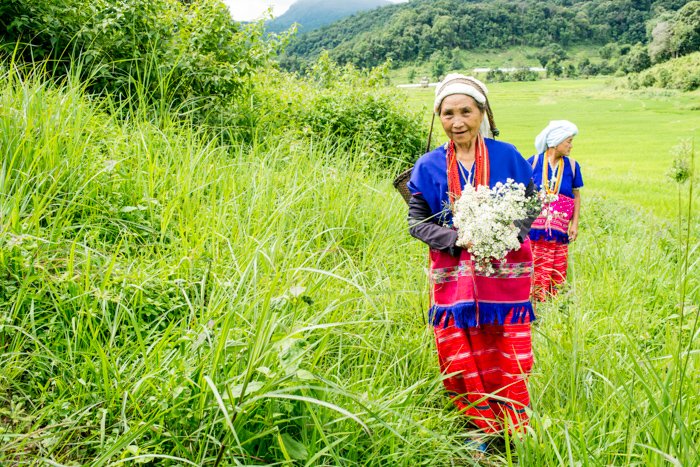




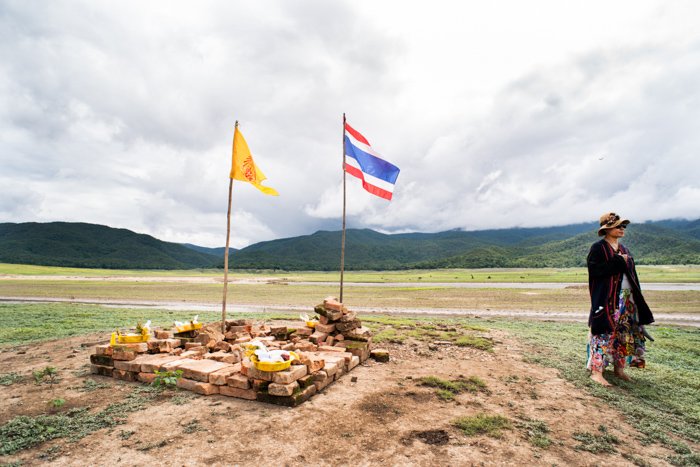


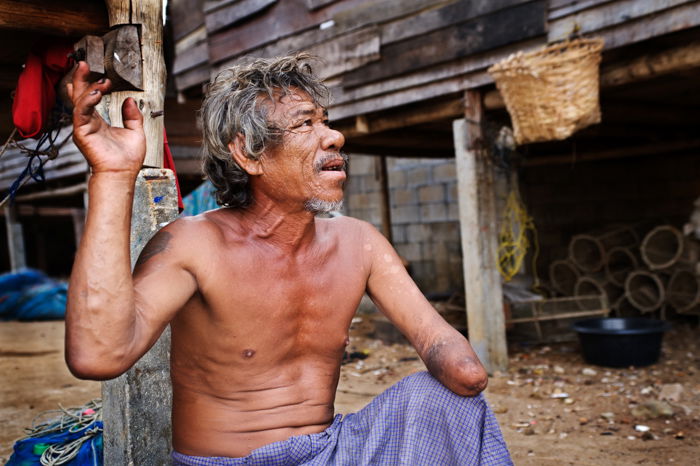

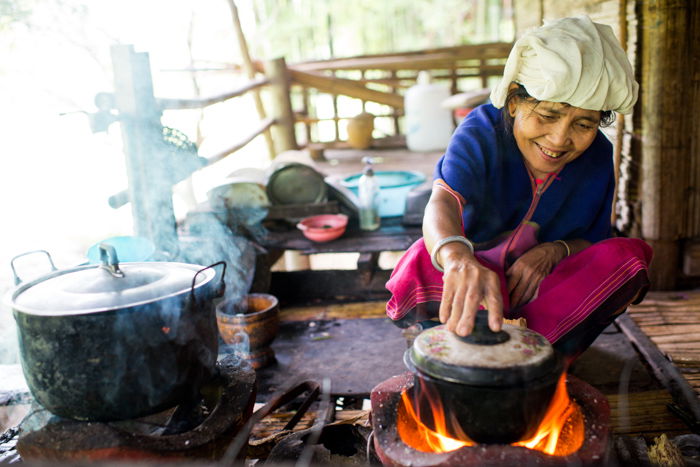
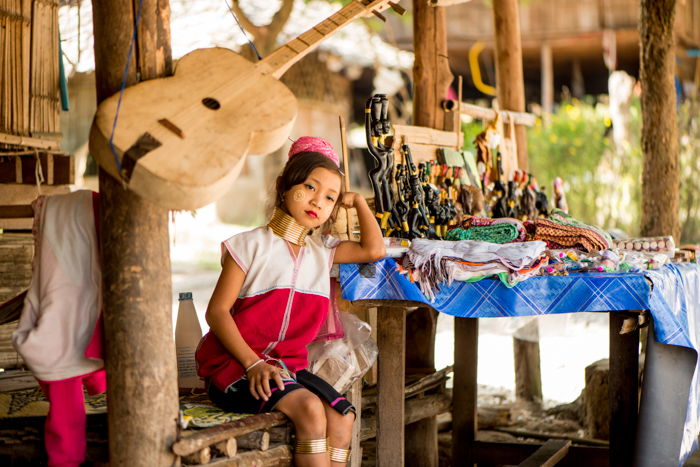
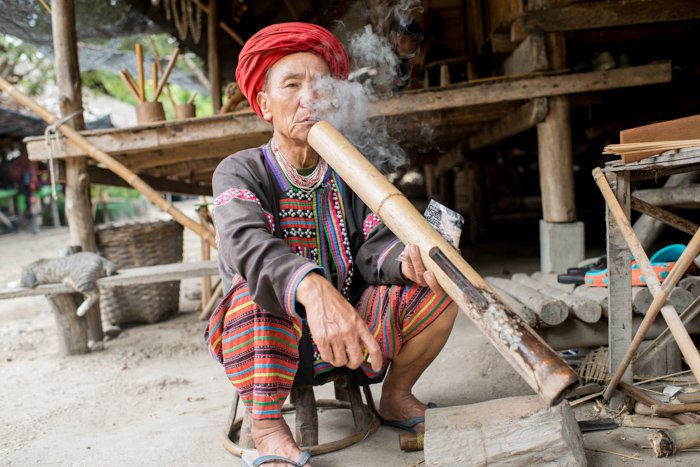
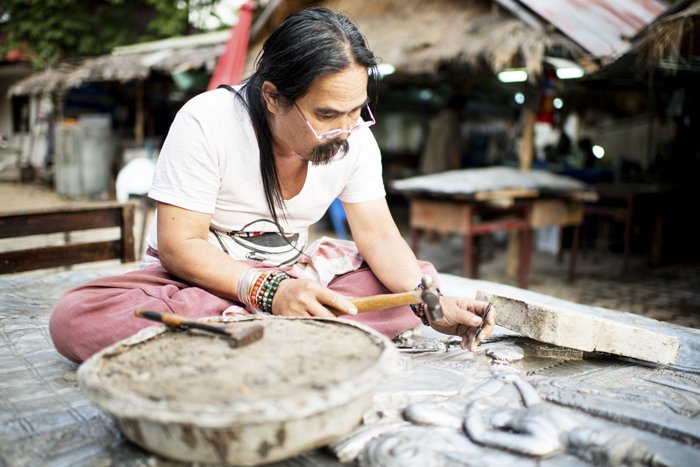
title: “10 Tips For Innovative Environmental Portrait Photos” ShowToc: true date: “2023-02-14” author: “Rebecca Woodard”
So, what are environmental portraits? These images fall somewhere between a staged studio portrait and a candid portrait. And the place you take the picture plays a big role in telling the viewer more about your subject. Let’s first start with some definitions. Then I’ll offer some tips on how you can capture stunning environmental portraits.
What is an Environmental Portrait?
Portraits are photos that you stage to show the personality and the character of the subject. To do this, the person’s or face is usually the most dominant feature. So, you generally focus more on the facial traits of the subject you’re photographing. Yet, it’s not always necessary.
What is a Candid Portrait?
Candid portraits are photos without the subjects posing. These capture people as they are, without creating scenes and setting up the composition. When people don’t know that you’re photographing them, we talk about “secret photography”. It is a type of candid photography. But candid shots are not necessarily taken without the subjects noticing the photographer.
What is an Environmental Portrait?
Environmental portraits are snapshots of people in their environments. In these portraits, people are connected to and reflected in the location you photograph them in. Environmental portraits can be candid or staged shots. There is no rule for how spontaneous they should be. And it’s a kind of photography that’s quite popular among travel photographers. Good environmental portraits will tell strong stories of their subjects. Their immediate surroundings will give the viewer insight into where these people are, what they do, and who they are. Locations that help to tell a person’s story could be places where they relax, work, or play:
Their home Their workplace A favourite place to drink or eat A meaningful spiritual or religious place Where they walk, exercise, or play sports
Environmental portraiture is intertwined with documentary photography and photojournalism. And when an environmental portrait is a candid portrait, it can sometimes be seen as street photography.
My 10 Tips on Taking Engaging Environmental Portraits
Here are my top tips for how to create engaging environmental portraits of people in their natural settings. My examples are from my times of travel. But you can take pictures of friends, family, co-workers, neighbors, and strangers wherever you live.
1. Tell a Story with a Relevant Background for a Compelling Portrait
Knowing who you’re photographing is key to a fantastic environmental portrait. If you know something about the person’s story, that will help you create more compelling and meaningful images. There may be questions that you can answer with your environmental portrait.
Who is this person? What do they do? Where do they live?
And when you’re setting up your environmental portrait, look at the background. Check for elements that will support your subject’s story. Finding a relevant background can be challenging. But do your best to include something that illustrates a vital aspect of the subject. Compose your image with at least one significant object, detail, or view in the background of your image. For example, I included a detailed carved wooden panel in this environmental portrait of a Thai Buddhist nun.
2. Know the Importance of the Location for a Meaningful Environmental Portrait
Find out what’s significant about the location too. It pays to ask because you might not notice something that could be vital. In this photo, I only understood the significance of the stacked bricks with flags and plastic baskets after asking about them. I discovered that the area is a valley flooded in the wet season because of a hydro dam. Before the dam, there was a temple at this site. The local people reconstruct a physical representation of this holy site each dry season. After I heard her story, I was able to take a better portrait to tell her story better. You can include words to go with the image to give the viewer a more precise understanding. Without some explanation, the viewer may not fully appreciate the elements in the photo. This commentary is typical in editorial photography or editorial portrait photography.
3. Immerse Yourself in Their World for an Intimate Environmental Portrait
To be a better environmental portrait photographer, look beyond only breaking composition rules. Sit where your subject sits and stand where they stand. See the world from their perspective. By taking time to immerse yourself in their world, you may get some more clues about who they are and how to best photograph them.
4. Be Friendly and Relaxed to Help Your Subject Pose More Naturally
Approaching strangers can be difficult for many photographers to do. But it’s a part of taking environmental portraits. You may have to get out of your comfort zone. Be friendly and attentive. And pick a person you think may enjoy having their photograph taken. Be mindful of creating a positive vibe. It will help your subject relax and pose naturally for the environmental portrait. Your subject will reflect you like a mirror. If you’re nervous, this will show in your subject’s demeanour. If you’re uncomfortable, they will be uncomfortable.
5. Engage With Your Subject to Take a Lively Environmental Portrait
Connect with a person you’re taking an environmental portrait of will help you create a livelier image. Take time to chat with them a little. Even if you don’t speak the same language, a bit of non-verbal communication will help. Most of the time, I ask for permission to take a person’s photo. For example, in Thailand, this can be as simple as a smile and a gesture at my camera. If I get a smile and nod in reply, I know it’s okay to continue. At first, I take a few photos of my subject without any conversation. When I’m happy with my initial images, I show them the back of my camera. People love seeing their pictures, and this usually leads to more conversation. Then, when the situation is right, I take some more photos. Also, don’t be afraid to direct your subject for a particular pose. And prepare your camera’s settings before you approach your subject. Thinking about what exposure settings to use will distract you when you should instead be interacting with the person.
6. Use a Lens and Camera that Best Captures Your Subject
It’s important to have the right portrait lens to capture your environmental portrait properly. I suggest a mid-range lens between 35mm and 70mm. I shoot environmental portraits with a 35mm, f/1.4 lens on a full frame camera body. This setup gives the same view as we see with our eyes. It allows me to be close to my subject and still include enough background. And it allows me options for different depths of field. No matter what lens and camera you use, ensure it helps you best capture your subject and background.
8. Fill the Frame with Only Essential Elements
None of the rules of photography is significant if your frame is lacking essential elements. Concentrate on your main subject and story, and make sure there are no distractions in your image. You want to make sure what is in your frame supports the story you are telling. This is the difference between a simple portrait and an environmental portrait. Look at everything you can see in the background. Ask yourself if it’s relevant and related to the person you’re making a portrait of. If it’s not, work on it by improving the composition. You can do the following:
Adjust your point of view. Have your subject move. Remove the distracting element from the background.
7. Use Different Depths of Field to Balance Your Portrait
A deep depth of field is usually necessary when it comes to environmental portraits. It can be a good idea for you to have a greater part of your image in focus to show what is surrounding your subject. But you may also choose to have a narrower aperture setting (a lower f-stop number) to have less of your composition in focus. Ensure you show the right amount of details in the background, or the sense of place in the image get lost. I like to use a medium aperture setting with the subject and background at a close distance. And I focus on the eyes of my subject. It’s important to find a balance of how much is in focus. Everything doesn’t have to be sharp for an effective composition.
9. Use Props to Help Tell the Story
Sometimes you may have the opportunity to add props to your portrait. Look around for something the person can hold or interact with. It’s important to choose something meaningful to their story. If you have to work with a dull background, introducing a prop can make a big difference. Props are a great way to add more color, texture or show a person’s culture in an environmental portrait. The first time I met this Lahu man, I didn’t know he enjoyed smoking tobacco in a bamboo water pipe. He was a real character on his own. But, the inclusion of his pipe made this environmental portrait of him more interesting. Having him smoke a pipe in front of his home gave more dimension to the portrait, instead of having him only stand or sit there.
10. Enhance Your Environmental Portrait with Editing
Sometimes you won’t have any control over your subject and background while shooting. In these cases, you can improve your environmental portrait by fine-tuning it with editing software like Lightroom or Photoshop. Remove distracting objects by cloning them out in Lightroom. It will often make the portrait stronger. And if there is something behind your subject that you cannot move, remove it in Photoshop. Creating a vignette is another method to help bring more attention to the subject. This means darkening the edges of the frame, so the viewer’s eyes move to your subject. But be careful not to overdo these techniques. You don’t want to lose important details or make your images look artificial and over-edited.
Conclusion
In environmental portraits, you want to have the background complement your main subject. But your subject is still the most important part of your image. By understanding who they are and what the surroundings mean to them, you’ll produce engaging environmental portraits. As a photographer, traveling or walking around where you live, you’ll have many opportunities to take these kinds of photos. Remember, the essence of environmental portraiture is the connection between the subject and their surroundings. Are you looking for a simpler way to learn complex photography skills while you take pictures? Check out our Quick Capture Cheat Sheets. They’ll help you master 52 different aspects of photography.













